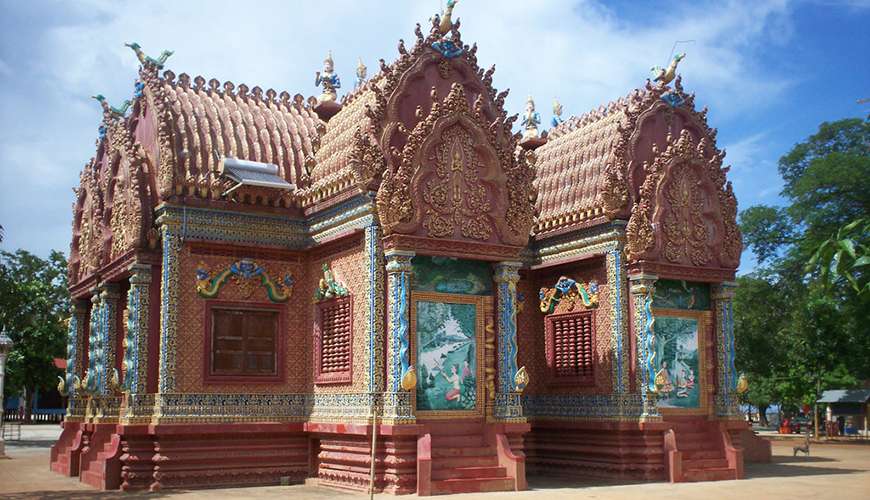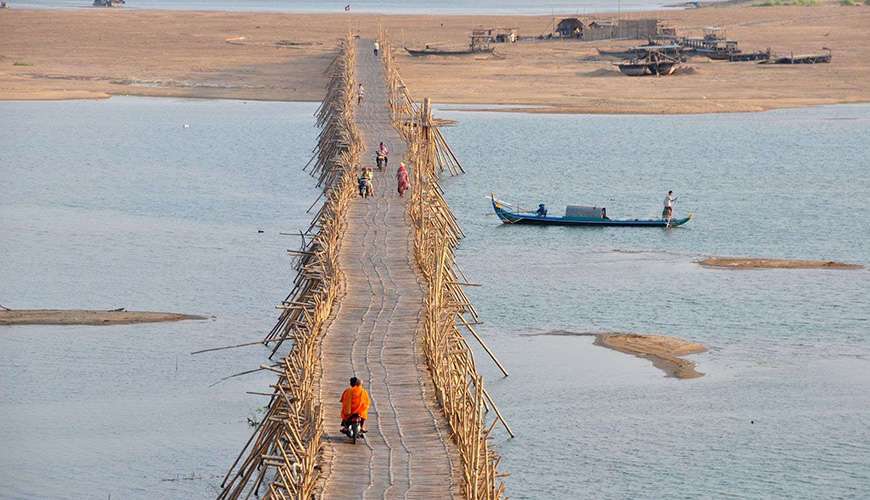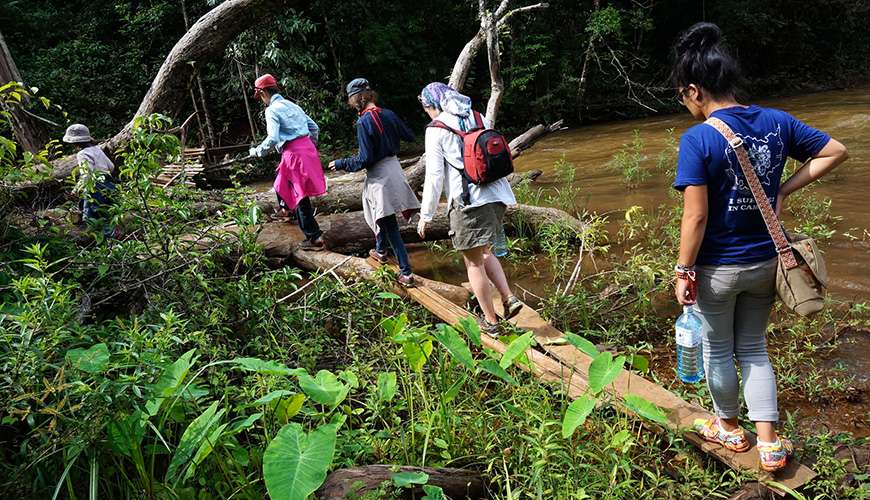Bounded by Laos to the North and Vietnam to the east,
Eastern Cambodia is a country of rugged hills, ethnic diversity and authentic experiences separated from the rest of Cambodia by the Mekong River.
In ancient times, during the country’s golden age, it was ruled by the powerful Khmer Empire, which dominated Indochina and Southeast Asia as a whole, until it went into a centuries long decline and finally collapsed for complex and not entirely understood reasons in the 15th century.

Beautiful Khmer architecture.
The fall of the Khmer ushered in what is now known as the “Dark Ages of Cambodia” where constant pressure from neighbouring Siam and Vietnam eventually led to the country accepting French Protectorate status and becoming part of the French colony in Indochina.
The period of Khmer Rouge rule from 1975-1981 left deep scars that can still be felt today. The brutal regime and the genocide they carried out would result in the deaths of approximately 25% of the entire population, and this fact is still visible in the demographics in the country.
The people in the region are incredibly friendly, as well as eager for travellers to visit their country and eventually for it to be known for something different than the dark days of the genocide. While Cambodia is far less diverse than its neighbours, the locals here in the eastern highlands are part of the Khmer Loeu (upland Khmer) ethnic group, and are considered the original inhabitants of Cambodia.
The climate remains consistent all year round, with temperatures averaging in the mid 20’s the entire year. Like elsewhere in Cambodia and all of Indochina, the rains are defined by the monsoons. The southwestern monsoon arrives in May and carries with it the rainy season, lasting until October. At this point the northeastern monsoon takes over, facilitating the dry season lasting from October through April.

The famous “Bamboo Bridge” which connects the mainland and Koh Paen Island within the Mekong.
Your journey in Eastern Cambodia is likely to start in Kompong Cham, as it serves as a gateway to region, being the nearest to the capital of Phnom Penh. Spend some time in this peaceful river-town visiting its two ancient pagodas, Wat Hanchey, and Wat Maha Leap or enjoy a relaxing bike ride across the Bamboo Bridge to Koh Paen Island.
Following the Mekong north, you will reach Kratie, an excellent location to start a loop of the Eastern Highlands. The town is also a highlight for animal lovers, as out on the river you can search for the elusive family of Irrawaddy dolphins that make their home here, or head 30 kilometres out of town to visit the Mekong Turtle Conservation Centre. The work done here is crucial to the survival of the endangered species, and observing how they nurse the baby turtles for the first 10 months of their life before releasing them into the Mekong is a great experience.
Setting out on your loop of the region, head north from Kratie to Ban Lung. From here you can visit Virachey National Park, one of Cambodia’s most pristine natural areas that focuses on cultural experiences with the local ethnic minority villages. Also near Ban Lung is Yeak Laom Lake, a stunning crate-lake that shimmers with emerald coloured light.
Continuing on your loop, head south to Sen Monorom. Highlights here include eco-tours of the Seima Protected Forest, which is absolutely teeming with wildlife, and the magnificent Bou Sraa Waterfall, the biggest waterfall in the whole country featuring two stunning tiers and a 25 metre final .

Eastern Cambodia is the country’s prime destination for trekking.
The Mekong is the life-blood of Cambodia, so it should be no surprise that freshwater seafood forms an integral part of their cuisine. Samlor is an example of this, a thin soup created from fish paste. The dishes share a lot in common with neighbouring Thailand and Vietnam, while drawing influence from French and Chinese cuisine. Unlike Thailand though, the food is not spicy, and there are nearly no dishes containing chili of any kind.
All in all, the rugged highlands of Eastern Cambodia feels decidedly more authentic and off-the-beaten-track than the rest of the country, and allows you to spend time enjoying the beautiful nature and fascinating cultural visits to remote villages.